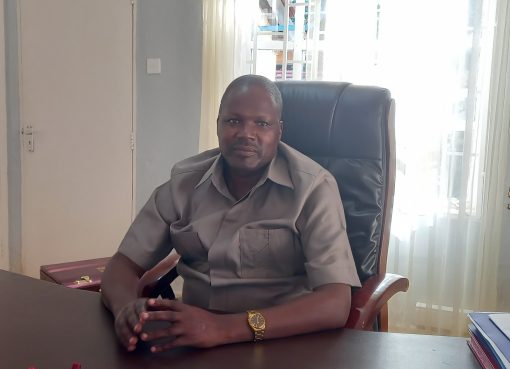The Ministry of Information, Communications and Technology staff yesterday planted 5,000 trees at the Ngong Forest to enhance the Ngong Hills forest cover.
Leading the tree planting exercise at Ngong Hills in Kajiado West Sub County, the ICT Administration Secretary Juliana Yiapan said the ministry is determined to restore the country’s destroyed forest cover.
She said the tree planting exercise is in support of the Presidential directive that government agencies participate in the 1.8 billion tree planting campaign to enable the country achieve and maintain the ten percent forest cover target by 2022.
Officers who participated in the tree planting exercise were from the Ministry of ICT headquarters, Communications Authority (CA), Information, Communication and Technology Authority (ICTA) and Kenya Forest Service and members of the community.
Yiapan said the government has put in place measures and engaged the community to promote tree planting in their localities in a bid to eradicate deforestation which is the root cause of conflict, climate change, insecurity and drought in all regions.
“Trees and forests play an essential role in mitigating the impact of climate change, as they filter the air, reduce noise pollution, provide a habitat for animals and water for both man and animals,” said Yiapan.
The Administration Secretary noted that over the past years Kenyans have witnessed the devastating effects of deforestation such as disastrous floods, soil erosion, extinction of important wildlife and an increase in global warming and urged Kenyans to embrace reforestation in order to restore the destroyed forests.
“Through reforestation efforts we can reverse this trend and restore forests, as set out in Vision 2030 Agenda for Sustainable Development,” stressed Yiapan.
In his remarks, the CA Director Competitions-Tariffs and Market Analysis Mr. Christopher Kemei said the Communication Authority takes environmental issues seriously and will continue to collaborate with all stakeholders to ensure that the country achieves the ten percent forest cover.
“Communication Authority highly supports the allocation of 10 percent of the Corporate Social Responsibility budget towards tree seedlings and we shall continue to devote available resources to support investment in tree growing and environmental conservation to achieve the Big Four Agenda,” said Kemei.
He said the Authority is determined to see the country avert land degradation and desertification which has adversely affected the country’s environment and socio-economy.
In his address Director Programmes and Standards Mr. Paul Ronoh said ICTA is committed to planting trees in public primary schools where the Authority has installed digital devices under the Digital Literacy Programme.
“ICTA plans to partner with Kenya Forest Services to encourage schools to plant trees. We are going to use it as a vehicle to promote forest coverage across the country,” he added.
Speaking at the event, Chief Conservator Francis Kariuki from Kenya Forest Services called on corporate bodies, government departments, private sector and all stakeholders to support the government initiative of achieving the ten percent target.
Thanking the ICT ministry for fencing the forest and providing resources that have enabled Kenya Forest Services to plant trees and other corporate bodies which have participated in improving the Ngong forest habitat, Kariuki announced that in April this year Kenya Forest will roll out more tree planting at the site which it intends to turn into a park for Nairobians.
“We have planted the 5,000 indigenous trees in a 5, 000 ha, we have 1,000 ha that has been put under rehabilitation” said Kariuki.
Environment and Forestry experts estimate that government, private sector and communities will be required to produce and plant 360 million seedlings every year for the next five years, making a total of 1.8 billion seedlings.
By Bernadette Khaduli



